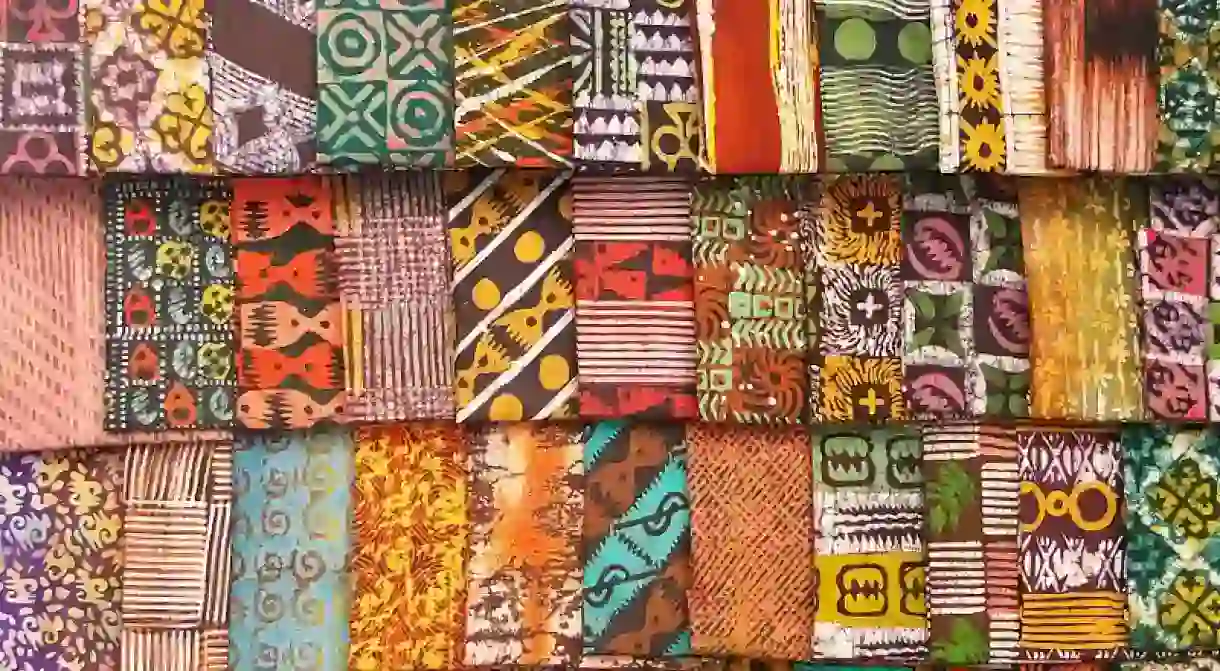Ntonso, Kumasi: The Home of Adinkra Symbolism

Used for generations, Adinkra are Akan symbols drawn in ink and used by the Ashanti people of Ghana. Their representations and meanings are likened to fables, and are used to bestow wisdom and knowledge. Ntonso, a small town near Kumasi is one of the only places in the world where the creation and use of Adinkra symbols is is still practised and taught. Here’s everything you need to know.
The ‘home of Adinkra’
One of the most popular townships in Kwabre East District for tourists to visit is Ntonso, located a few kilometres from Kumasi on the Mampong road. This is where colourful Adinkra kente strips are made, and where locals busy themselves with weaving, joining and stamping under the shade of large trees. Looms with busy reeds and heddles wind out the fabric needed for decorating. The local Boakye family are renowned for their workshops where they demonstrate, teach and trade in Adinkra cloth.

The history of the Ashanti people, their way of life and their philosophy are all captured by Adinkra. Animals are a common representation, as their typical behaviour is relatable to that of humans, much like the stories in Aesop’s fables. War horns, cola nuts and palm trees are some other object that are represented and used to impart this wisdom.
The geometrical cuts and symmetry of most Adinkra make them suitable for use on fabrics, pottery, buildings and crafts. Sculptors, carpenters, fashion and graphic designers, and architects use the symbols to design their products or for their logos.

Adinkra symbols and their meanings
Some examples of the meanings behind Adinkra symbols include: ‘Bi-Nka-Bi’ which means ‘bite not one another’ or simply that one should be careful not to step on someone else’s toes or upset them. ‘Dame-Dame’ is the name of a chequered board game popular in Ghana. The Adinkra of this game symbolises intelligence and ingenuity. ‘Duafe’ or ‘feminine virtue’ is represented as a wooden comb. ‘Gye Nyame’ or ‘except God’ signifies the belief in a supreme being. ‘Akoben’ is the war horn which stands for ‘vigilance’ or ‘wariness’. ‘Mmerɛ-Dane’ which looks a bit like an hourglass simply means ‘time changes’ or ‘life has its dynamism’. The complicated, maze-like drawing of ‘Nea Onnim no Sua A Ohu’ means ‘he who does not know can acquire knowledge through learning’.

Adinkra symbols appear on many royal objects preserved by the Ashanti people, the most precious of which is that of the Golden Stool or ‘Sika Dwa Kofi’. The stool is the life force of the Ashanti kingdom and the grandest symbol of authority. Other regalia includes Akan weights, sceptres, crowns and kente which are all prominent at festivals. Adinkra is embedded in many objects and prints at Manhyia Palace, the prime stool venue of the Ashanti. The symbols continue to be used by Ashanti people as well as the Ghanaian diaspora in their art, fashion, and daily lives.

Adinkra cloth
The most common place to find Adinkra symbols in Ghana is printed on cloth, for which the town of Ntonso is famed. The cloth is decorated with Adinkra symbols and most commonly used during important cultural gatherings but especially at funerals.

Block stamping methods to embed Adinkra include using wood carved out from a calabash or metal block stamping. Screen printing is also common. The dyeing process involves soaking, pulverising, and boiling plain cloth with the bark and roots of the badiɛ tree (Bridelia ferruginea).













